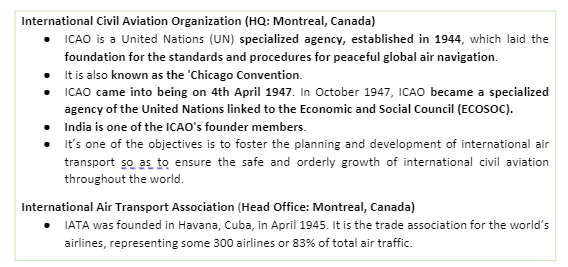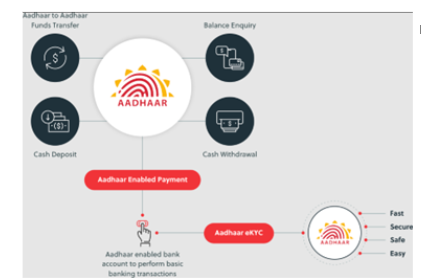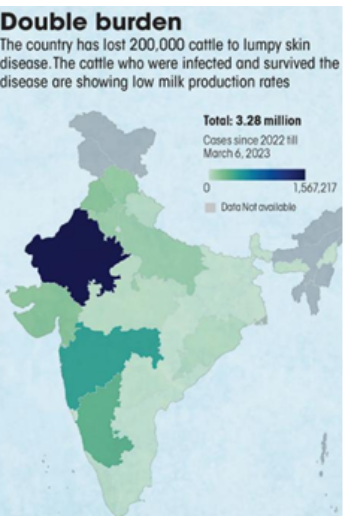Wednesday, 4th October 2023
Nobel Prize in Medicine 2023 - Edukemy Current Affairs
In News: The 2023 Nobel Prize for physiology or medicine has been awarded to the Hungarian biochemist Katalin Karikó and the American physician-scientist Drew Weissman for their contribution in development of mRNA vaccines.
About mRNA vaccines:

- mRNA stands for messenger RNA. It is a molecule that carries genetic information from DNA to the ribosomes in cells, where it is used as a template for protein synthesis.
- mRNA vaccines use synthetic mRNA that encodes a specific protein from a pathogen, such as the spike protein of the coronavirus. Example: Pfizer-BioNTech and Moderna vaccines.
- Once injected, some cells take up the mRNA and use it to produce the protein, which triggers an immune response that produces antibodies and memory cells that can recognize and fight the pathogen in the future.
- mRNA is very fragile and will be shredded apart at room temperature. Hence to preserve its integrity, the mRNA needs to be wrapped in a layer of oily lipids, or fat cells.
Other types of vaccines:
- Live attenuated vaccines: These vaccines use a weakened or live version of a pathogen. The weakened pathogen is not strong enough to cause disease, but it is still strong enough to trigger an immune response. Example: Covaxin (India)
- Vector vaccines: These vaccines use a harmless virus to deliver genetic material from the pathogen to cells. The genetic material instructs cells to produce a specific protein from the pathogen, which triggers an immune response. Example AstraZeneca Johnson & Johnson.
- Protein subunit vaccines: These vaccines contain specific proteins from a pathogen. The proteins are not infectious, but they are still able to trigger an immune response. Example: Novavax.
- Inactivated vaccines: These vaccines use a killed version of a pathogen. The killed pathogen is not infectious, but it is still able to trigger an immune response. Example: Sinopharm, Sinovac.
- Toxoid vaccines: These vaccines contain a weakened or inactivated form of a toxin produced by a pathogen. The toxoid is not harmful, but it is still able to trigger an immune response to the toxin. Example Tetanus vaccine
- Conjugate vaccines: These vaccines combine a protein from a pathogen with a sugar molecule. The sugar molecule helps the body to produce a stronger immune response to the protein. Example: Pfizer-BioNTech for children under 5.
Advantages and challenges associated with mRNA vaccines:
Advantages:
- No introduction of viruses: Most vaccines use weakened or dead bacteria or viruses to evoke a response from the immune system. However mRNA vaccines only introduce a piece of the genetic material that corresponds to a viral protein and does not expose individuals to the virus itself.
- Faster and Cheaper to produce: mRNA vaccines are faster and cheaper to produce, as they do not require cell culture or complex purification processes.
- Flexible and Adaptable: mRNA vaccines are also more flexible and adaptable, as they can be easily modified to target new variants or strains of pathogens.
Challenges:
- Handling of vaccine: mRNA vaccines need to be frozen from -90º Celsius to -50º Celsius. They can be stored for up to two weeks in commercial freezers and need to be thawed at 2 degrees Celsius to 8 degrees Celsius at which they can remain for a month.
Contribution of Nobel Laureates to mRNA vaccines:

- Katalin Karikó and Drew Weissman discovered nucleoside base modification that enabled the development of effective mRNA vaccines against COVID-19.
- Dendritic cells, playing a crucial role in the immune system identify the lab produced mRNA as foreign, thus setting off the release of inflammatory signals.
- The scientists questioned the phenomenon of mRNA being considered foreign, unlike mRNA from mammalian cells, which didn't trigger the same response.
- The scientist realised that RNA from mammalian cells is often chemically modified, whereas lab-created mRNA lacks these modifications. They hypothesised that modifying the bases in lab-created mRNA could reduce the inflammatory response.
- Their experiments confirmed this hypothesis, with base modifications significantly reducing inflammation when introduced to dendritic cells. Their research removed critical obstacles, making mRNA more suitable for clinical applications.
UPSC Civil Services Examination, Previous Year Questions (PYQs)
Prelims
Q. In the context of vaccines manufactured to prevent COVID-19 pandemic, consider the following statements: (2022)
-
The Serum Institute of India produced a COVID-19 vaccine named Covishield using mRNA platform.
-
Sputnik V vaccine is manufactured using a vector-based platform.
-
COVAXIN is an inactivated pathogen-based vaccine.
Which of the statements given above are correct?
(a) 1 and 2 only
(b) 2 and 3 only
(c) 1 and 3 only
(d) 1, 2 and 3
Answer: (b)
Mains
Q. What is the basic principle behind vaccine development? How do vaccines work? What approaches were adopted by the Indian vaccine manufacturers to produce COVID-19 vaccines? (2022)
Source: Shot in the arm: On the Medicine Nobel 2023 - The Hindu
Geospatial Intelligence - Edukemy Current Affairs
Why in News: In recent times, the world has witnessed a series of unprecedented natural disasters across the United States, including record-breaking temperatures, Canadian wildfires, historic flooding, and a powerful hurricane where usage of geospatial intelligence can mitigate such crises.
Geospatial Intelligence:
- To produce real-time maps and simulations, data is gathered and integrated from a variety of technologies, including satellites, sensors, and aerial photographs.
- It helps with threat identification and management, emergency response support, environmental monitoring, logistics, and other tasks.
- India has a strong geospatial ecosystem, with use of geospatial technology across all ministries and agencies, including the Survey of India (SoI), Indian Space Research Organisation (ISRO), Remote Sensing Application Centres (RSACs), and the National Informatics Centre (NIC).
Significance of Geospatial Intelligence:
- Monitoring Tropical Cyclones: Geospatial intelligence is used by the National Hurricane Centre to track cyclone development, position, and direction. This data is useful for coordinating evacuations, sending warnings, and allocating resources.
- Search-and-Rescue Effort: Geospatial intelligence helped find survivors after the 7.8 magnitude earthquake that struck Turkey and Syria in February 2023 by identifying damage and locating the epicentre. It made it easier to set up help centres and distribute emergency supplies.
- Environmental Monitoring: Monitoring of polar ice, precipitation, snowpack, and temperature assists in predicting and preparing for disruptions.
- Border Management: Satellite images play a vital role in reporting critical information.
- Transportation and Logistics: Geospatial data and GPS technologies allow for effective administration of global supply chains. It offers crucial freight movement information to companies and governments.
- Digital Twins for Decision Making: Digital twins are virtual replicas of real systems, used for modeling and predicting outcomes. They have proven effective in conflict settings for simulating weather and terrain.
Government’s Initiatives to Promote Geospatial Technology in India:
- Government introduced the "Geospatial Information Regulation Bill, 2021." This bill aimed to regulate the acquisition, dissemination, and use of geospatial information in India.
- National Geospatial Policy, 2022 was launched to streamline the utilization of geospatial intelligence.
- Geospatial Energy Map of India has been developed in collaboration with NITI Aayog and ISRO. It provides a comprehensive view of energy production and distribution in the country.
Challenges in Geospatial Intelligence:
- Hacking information – The primary reluctance to share stems from the concern that terrorists or criminals could use such information.
- Privacy issue – India doesn’t have a dedicated data protection policy in that context use of Geospatial data may cause privacy issues.
- The unavailability of foundation data, especially at high-resolution, is also a constraint.
- The lack of clarity on data sharing and collaboration prevents co-creation and asset maximization.
Way Forward:
- There is a need to establish a geo-portal to make all public-funded data accessible through data as a service model.
- This should include the data aggregation, data layers for cities, and data of natural resources.
- India should start a bachelor’s programme in geospatial in India's premier institutions.
UPSC Civil Services Examination, Previous Year Question (PYQ)
Prelims
Q.1 In the context of space technology, what is “Bhuvan”, recently in the news? (2010)
(a) A mini-satellite launched by ISRO for promoting distance education in India.
(b) The name given to the next Moon Impact Probe, for Chandrayaan-II
(c) A geoportal of ISRO with 3D imaging capabilities of India
(d) A space telescope developed by India
Answer: (c)
Mains
Q.1 What is India’s plan to have its own space station and how will it benefit our space programme? (2019)
Q.2 Discuss India’s achievements in the field of Space Science and Technology. How the application of this technology helped India in its socio-economic development? (2016)
MS Swaminathan - Edukemy Current Affairs
Why in News: Monkomb Sambasivan (MS) Swaminathan, hailed as the 'Father of the India’s Green Revolution,' passed away recently at the age of 98.
About MS Swaminathan:
- He was born on 7th August, 1925, in Kumbakonam, Tamil Nadu.
- He initially intended to pursue a profession in medicine, but he changed his mind after learning about the Bengal famine of 1942–1943. This terrible event had a tremendous effect on him and fuelled his passion for enhancing India's agricultural sector.
- He was the Director General of the Indian Council of Agricultural Research (ICAR), where he made significant contributions to the advancement of agricultural research and instruction in India.
Contributions:
- Green Revolution: He was widely recognized for his pivotal role in the Green Revolution, a transformative phase in Indian agriculture that significantly increased crop productivity and ensured Food Security for the nation.
- High-Yielding Wheat and Rice: In the 1960s and 1970s, Swaminathan and Norman Borlaug's revolutionary work on the development of high-yielding wheat and rice varieties, particularly the semi-dwarf wheat types, revolutionised agriculture in India.
- Farmer Welfare: The "Swaminathan Report," which served as the National Commission of Farmers' chair, studied the reasons behind farm distress. Farm unions all throughout India continue to press for one of its proposals, which states that Minimum Support Prices (MSP) should be at least 50% higher than average production costs.
- He played a pivotal role in developing the Protection of Plant Varieties and Farmers' Right Act 2001.
- He also established the M. S. Swaminathan Research Foundation (MSSRF) in 1988 to promote sustainable agriculture and rural development.
Accolades:
- He has been honoured as the first World Food Prize Laureate in 1987.
- He has also been conferred with the Padma Shri (1967), Padma Bhushan (1972) and Padma Vibhushan (1989).
- He has also been conferred with various international honours including the Ramon Magsaysay Award (1971) and the Albert Einstein World Science Award (1986).
UPSC Civil Services Examination Previous Year Question (PYQ)
Mains
Q. How was India benefited from the contributions of Sir M. Visvesvaraya and Dr. M.S. Swaminathan in the fields of water engineering and agricultural science respectively? (2019)
Q. Explain various types of revolutions, took place in Agriculture after Independence in India. How these revolutions have helped in poverty alleviation and food security in India? (2017)
Global Innovation Index 2023 - Edukemy Current Affairs
Why in news? Recently, India retained 40th rank out of 132 economies in the Global Innovation Index 2023 rankings published by the World Intellectual Property Organization.
About:

- The GII, published by the World Intellectual Property Organisation (WIPO), evaluates 132 economies on their innovation capabilities.
- It used 80 indicators to track global innovation trends.
Key Highlights of GII 2023
- Switzerland secured the top position in the index, followed by Sweden, the United States, the United Kingdom, and Singapore.
- China ranked 12th among middle and lower-middle-income economies, with no others in the top 30.
- India secured the 40th position in the latest GII 2023, showcasing a remarkable climb from the 81th spot in 2015.
- This ranking is attributed to India’s vibrant start-up ecosystem, knowledge capital, and contributions from public and private research organizations.
- India also secured the top position among the 37 lower-middle-income countries and leading among the 10 economies in Central and South America.
Digital World of Cookies - Edukemy Current Affairs
Why in news? The digital world of cookies plays a significant role in any online experience.
About:

- Cookies are a vital component of the digital world, enhancing online experiences by remembering login information, preferences, and interactions on websites.
- For Example: Platforms like Facebook and Google use cookies to track online behavior, ensuring the ads you encounter align with your preferences.
- Cookies come in various types, including session cookies (temporary), persistent cookies (long-lasting), secure cookies (encrypted), and third-party cookies (from domains other than the visited site).
- Benefits:
- Helps in Authentication: Cookies act as digital ID cards, aiding in user authentication by allowing websites to recognise and keep you logged in during your visit.
- Personalization Experience: Cookies enable personalization, as seen on platforms like Amazon, which use them to provide tailored product recommendations and shopping cart persistence.
- They are like keys to a secure club, granting seamless access to websites.
- Challenges:
- Privacy concerns: cookies could track your online behavior.
- Security risks: when cookies are inadequately secured, one can face cybercrimes and theft of personal data.
- Third-party cookies: may be harmful to the computer device or can steal the private information from the device.
- Large amounts of data generated by these cookies can slow down the computer or the website.
More information:
- General Data Protection Regulation and The California Consumer Privacy Act necessitates the websites to seek your approval before deploying certain cookie types, resulting in those somewhat irksome pop-ups and prompts.
- India’s Digital Personal Data Protection Act 2023 mandates explicit user consent for data collection via cookies.
https://www.thehindu.com/sci-tech/inside-the-digital-world-of-cookies/article67357119.ece
Airport Codes - Edukemy Current Affairs
Why in news? Recently, the upcoming Noida International Airport (NIA) in Jewar was awarded its own unique international three-letter code, ‘DXN’, by the International Air Transport Association (IATA).
About:
- The D in DXN signifies Delhi, which is the national capital, and N stands for Noida, which shows our presence in the Western UP area and X signifies connectivity within India and the world.
Airport Codes:
- Airport codes are unique identifiers assigned to each airport.
- These codes are essential for a seamless travel experience and are used in various contexts, from tickets and boarding passes to airport signage.
- Each airport actually has two unique codes: one assigned by IATA and another by the International Civil Aviation Organization (ICAO), a branch of the United Nations. These codes have distinct purposes:
- IATA Codes (Three-Digit Codes):
- Used for passenger facing operations — on tickets, boarding passes, signages and other consumer-related materials.
- Created in the 1960s to standardize airport identification.
- Examples include DEL for Indira Gandhi International Airport (Delhi) and BOM for Chhatrapati Shivaji Maharaj International Airport (Mumbai).
- ICAO Codes (Four-Digit Codes):
- Facilitate precise communication in aviation.
- Used by industry professionals such as pilots, air traffic controllers, and airport planners.
- Examples include VIDP for Indira Gandhi International Airport (Delhi).
- IATA Codes (Three-Digit Codes):
Karman Line - Edukemy Current Affairs
Why in news? The Karman line that demarcates the Earth’s atmosphere from space plays an important role.
About:
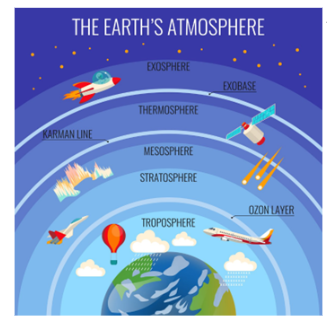
- The Kármán Line is an imaginary line located 100 km above sea level.
- It was established in the 1960s by a record-keeping body called Fédération Aéronautique Internationale (FAI).
- It was established to regulate airspace.
- The line is named after Theodore von Kármán (1881–1963), a Hungarian American engineer and physicist, who was active primarily in aeronautics and astronautics.
- He was the first person to calculate the altitude at which the atmosphere becomes too thin to support aeronautical flight and arrived at 83.6 km himself.
- There is no international law defining the edge of space, and therefore the limit of national airspace.
Importance of Karman Line
- The Kármán line has been compared to international waters, as there are no national boundaries and human laws in force beyond the line. Above this level, there would be free space.
- It acts as a legal reference separating airspace that a country can claim to own from space itself, governed like international waters.
- Defining a legal boundary of what and where space is can help avoid disputes and keep track of space activities and human space travel.
https://www.thehindu.com/sci-tech/science/karman-line-where-space-begins/article67368859.ece
Pink Bollworm - Edukemy Current Affairs
Why in news? Recently, Severe problem faced by cotton farmers in Rajasthan and neighbouring regions due to the infestation of the Pink Bollworm (PBW).
About:

- The infestation of PBW has been common in the cotton belt of northern Rajasthan, Haryana, and Southwestern Punjab since 2021. However, the damage caused by PBW is reported to be much more widespread and serious this time.
- Farmers have been using Bt cotton seeds, which have lost their effectiveness against the Pink Bollworm.
- The situation has led to a drastic reduction in cotton yields, making it financially unviable for many farmers.
Pink Bollworm
- The pink bollworm is an insect that is a pest in cotton farming.
- Scientific name: Pectinophora gossypiella
- It is native to Asia but has become an invasive species in most cotton-growing countries around the world.
- It is one of the most destructive pests of cotton, causing significant economic losses to cotton growers worldwide.
- While cotton is their primary host, Pink Bollworms have been observed attacking other plants such as hibiscus, okra, and hollyhock.
https://indianexpress.com/article/india/rajasthan-haryana-pest-havoc-cotton-fields-8960994/
Bolson Tortoise - Edukemy Current Affairs
Why in news? Biologists are in a slow and steady race to help North America’s largest and rarest Bolson tortoise species.
About:
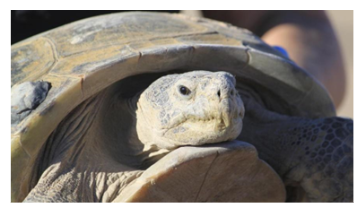
- Bolson tortoises is the largest and rarest land reptile, as well as the rarest of the six Gopherus species native to the North American Continent.
- Scientific name: Gopherus flavomarginatus.
- Adult males are generally smaller than females in this species.
- The tortoise is a land-dwelling reptile, and they spend about 85% of their time in earthen burrows.
- All foraging, nesting and mating activities take place during the tortoise’s active season from roughly April to October.
- Appearance:
- The base color of the plastron is yellowish, and that of the carapace ranges from darker shades of straw yellow to brown.
- Habitat:
- Their habitat is a semi-hot desert climate with winter temperatures around 2.8°C and summer temperatures ranging to 36.3°C.
- Distribution:
- This species at present, is restricted to a relatively small area of the grasslands of north-central Mexico in the states of Chihuahua, Coahuila and Durango, where it exists in disjunct sub-populations.
- Conservation status:
- IUCN: Critically endangered
- CITES: Appendix I
https://phys.org/news/2023-09-biologists-steady-north-america-largest.html
Safeguarding Children in the Age of Artificial Intelligence
In News: India is preparing to host international AI summits to underscore the strategic significance of AI for its economy. In the latter part of 2023, India will organize two important gatherings dedicated to Artificial Intelligence (AI).
However, as AI technology advances, there is an urgent need for robust regulation, especially to protect children and adolescents who are susceptible to various risks associated with AI. India's current data protection laws may not be adequate to address these emerging challenges.
Artificial Intelligence (AI) Regulation
AI regulation involves the establishment of rules, laws, and guidelines by governments and regulatory bodies to oversee the development, deployment, and utilization of artificial intelligence technologies.
The primary goal of AI regulation is to guarantee that AI systems are created and utilized in a manner that is safe, ethical, and advantageous to society while mitigating potential risks and harms. AI regulation can encompass various aspects, including:
- Safety and Reliability: Regulations may mandate that AI developers adhere to safety standards to prevent accidents or malfunctions caused by AI systems, particularly in critical domains such as autonomous vehicles or medical diagnostics.
- Ethical Considerations: In certain AI applications, especially those in critical areas like healthcare or finance, human oversight may be required to ensure that AI decisions align with human values and ethical principles.
- Data Privacy: Many AI systems rely on vast amounts of data. Regulations such as the European Union's General Data Protection Regulation (GDPR) establish guidelines for how personal data should be handled and safeguarded in AI applications.
- Transparency and Accountability: Some regulations may demand that AI developers provide transparency into their algorithms, facilitating an understanding of how AI systems make decisions.
- Export Controls: Governments may regulate the export of AI technologies to prevent sensitive AI capabilities from being acquired by unauthorized entities.
- Compliance and Certification: AI developers may need to meet specific certification requirements to ensure their AI systems meet regulatory standards.
- International Cooperation: Given the global nature of AI, there is a growing need for international collaboration on AI regulation to avoid conflicts and maintain consistent standards across borders.
Artificial Intelligence Regulation Around the world
- European Union (EU): The EU is working on the draft Artificial Intelligence Act, which aims to comprehensively regulate AI. It addresses various aspects of AI, including risk classification, data subject rights, governance, liability, and sanctions. The EU has also implemented the General Data Protection Regulation (GDPR), which has implications for AI systems that process personal data.
- Brazil: Brazil is in the process of developing its first AI regulation. The proposed regulation focuses on protecting the rights of individuals affected by AI systems, classifying the level of risk, and implementing governance measures for AI operators. It shares similarities with the EU's draft AI Act.
- China: China has actively regulated AI, with specific provisions for algorithmic recommendation systems and deep synthesis technologies. China's Cyberspace Administration is also considering measures to ensure the safety and accuracy of AI-generated content.
- Japan: Japan has adopted a set of social principles and guidelines for AI developers and companies. While these measures are not legally binding, they reflect the government's commitment to responsible AI development.
- Canada: Canada has introduced the Digital Charter Implementation Act 2022, which includes the Artificial Intelligence and Data Act (AIDA). AIDA aims to regulate the trade in AI systems and address potential harms and biases associated with high-performance AI.
- United States: In the United States, there are non-binding guidelines and recommendations for AI risk management. The White House has published a Blueprint for the Development, Use, and Deployment of Automated Systems, outlining principles for responsible AI development.
- India: India is considering the establishment of a supervisory authority for AI regulation. Working papers suggest the government's intention to introduce principles for responsible AI and coordination across various AI sectors. India also recognizes the need to address the unique challenges AI poses to children and adolescents.
Need for Robust AI Regulation for Child Safety
- Regulating AI for Overall Safety: Regulations should prioritize addressing addiction, mental health issues, and general safety concerns related to AI. AI services, especially those targeting youth, might employ deceptive practices to exploit vulnerable individuals. Robust regulations can help prevent such exploitation.
- Body Image and Cyber Threats: AI-driven distortions of physical appearance can negatively affect young people's body image. Additionally, AI can play a role in spreading misinformation, promoting radicalization, facilitating cyberbullying, and enabling sexual harassment, all of which pose serious threats to children and adolescents.
- Impact of Family's Online Activity: Parents sharing their children's photos online can inadvertently expose adolescents to risks, including privacy concerns and the potential misuse of their personal information. Regulations can help raise awareness about these risks and encourage responsible online behavior by parents.
- Deep Fake Vulnerabilities: AI-powered deep fakes can target young individuals, including the distribution of morphed explicit content. Effective regulations are needed to prevent the creation and dissemination of harmful deep fakes, especially those that target children.
- Intersectional Identities and Bias: India is characterized by a diverse landscape of gender, caste, tribal identity, religion, and linguistic heritage. There's a risk that real-world biases may be transposed into digital spaces, disproportionately affecting marginalized communities. AI regulations should address bias and ensure equitable treatment.
- Reevaluating Data Protection Laws: India's current data protection framework may not effectively protect children's interests. While banning the tracking of children's data by default can offer privacy protection, it may also limit the benefits of personalization in online services. Striking the right balance between privacy and personalization is a key regulatory challenge.
How India can Protect Young Citizens while preserving the Benefits of Artificial Intelligence
- Child-Centric AI Principles: Embrace UNICEF's guidance based on the UN Convention on the Rights of the Child, which outlines nine requirements for child-centric AI. These principles should form the foundation for creating a digital environment that prioritizes children's well-being, fairness, safety, transparency, and accountability.
- Transparency and Assessment: Follow the example of the Californian Consumer Privacy Act (CCPA), which advocates for transparency in default privacy settings and assesses potential harm to children arising from algorithms and data collection. Such provisions should be integrated into Indian AI regulations.
- Institutional Support: Consider establishing institutions similar to Australia's Online Safety Youth Advisory Council to provide insights into the specific challenges faced by young users in the digital age and inform policy decisions accordingly.
- Age-Appropriate Design Code: Encourage research to gather evidence on how AI impacts Indian children and adolescents. This evidence can serve as the foundation for developing an Indian Age-Appropriate Design Code for AI, ensuring that AI systems are designed with the unique needs and vulnerabilities of young users in mind.
- Digital India Act (DIA): When implementing the upcoming Digital India Act (DIA), prioritize the protection of children interacting with AI. The DIA should promote safer platform operations, user interface designs, and stricter measures to safeguard children's data and online experiences.
- Child-Friendly AI Products and Services: Encourage AI-driven platforms to provide age-appropriate content and services that enhance education, entertainment, and overall well-being for children. Robust parental control features should be implemented to allow parents to monitor and limit their children's online activities effectively.
- Digital Feedback Channels: Develop child-friendly online feedback channels where children can share their AI-related experiences, concerns, and suggestions. Interactive tools like surveys and forums can be utilized to gather inputs directly from young users.
- Public Awareness Campaigns: Launch public awareness campaigns emphasizing the importance of involving children in shaping AI's future. Collaborate with influencers and role models to amplify the message and engage with young audiences effectively.
In the age of rapidly advancing Artificial Intelligence (AI), prioritizing the interests and safety of young citizens is of paramount importance for India. By incorporating global best practices, engaging in a dialogue with children and adolescents, and developing adaptable and forward-thinking regulations, India can take significant steps toward creating a secure and beneficial digital environment for its youth. This approach not only safeguards their well-being but also harnesses the potential of AI to positively impact their lives and future opportunities.
UPSC Civil Services Examination, Previous Year Question (PYQ)
Q1. With the present state of development, Artificial Intelligence can effectively do which of the following? (2020)
-
Bring down electricity consumption in industrial units
-
Create meaningful short stories and songs
-
Disease diagnosis
-
Text-to-Speech Conversion
-
Wireless transmission of electrical energy
Select the correct answer using the code given below:
(a) 1, 2, 3 and 5 only
(b) 1, 3 and 4 only
(c) 2, 4 and 5 only
(d) 1, 2, 3, 4 and 5
Answer: (b)
Share the article
Edukemy’s Current Affairs Quiz is published with multiple choice questions for UPSC exams
MCQ
Get Latest Updates on Offers, Event dates, and free Mentorship sessions.

Get in touch with our Expert Academic Counsellors 👋
FAQs
UPSC Daily Current Affairs focuses on learning current events on a daily basis. An aspirant needs to study regular and updated information about current events, news, and relevant topics that are important for UPSC aspirants. It covers national and international affairs, government policies, socio-economic issues, science and technology advancements, and more.
UPSC Daily Current Affairs provides aspirants with a concise and comprehensive overview of the latest happenings and developments across various fields. It helps aspirants stay updated with current affairs and provides them with valuable insights and analysis, which are essential for answering questions in the UPSC examinations. It enhances their knowledge, analytical skills, and ability to connect current affairs with the UPSC syllabus.
UPSC Daily Current Affairs covers a wide range of topics, including politics, economics, science and technology, environment, social issues, governance, international relations, and more. It offers news summaries, in-depth analyses, editorials, opinion pieces, and relevant study materials. It also provides practice questions and quizzes to help aspirants test their understanding of current affairs.
Edukemy's UPSC Daily Current Affairs can be accessed through:
- UPSC Daily Current Affairs can be accessed through Current Affairs tab at the top of the Main Page of Edukemy.
- Edukemy Mobile app: The Daily Current Affairs can also be access through Edukemy Mobile App.
- Social media: Follow Edukemy’s official social media accounts or pages that provide UPSC Daily Current Affairs updates, including Facebook, Twitter, or Telegram channels.


